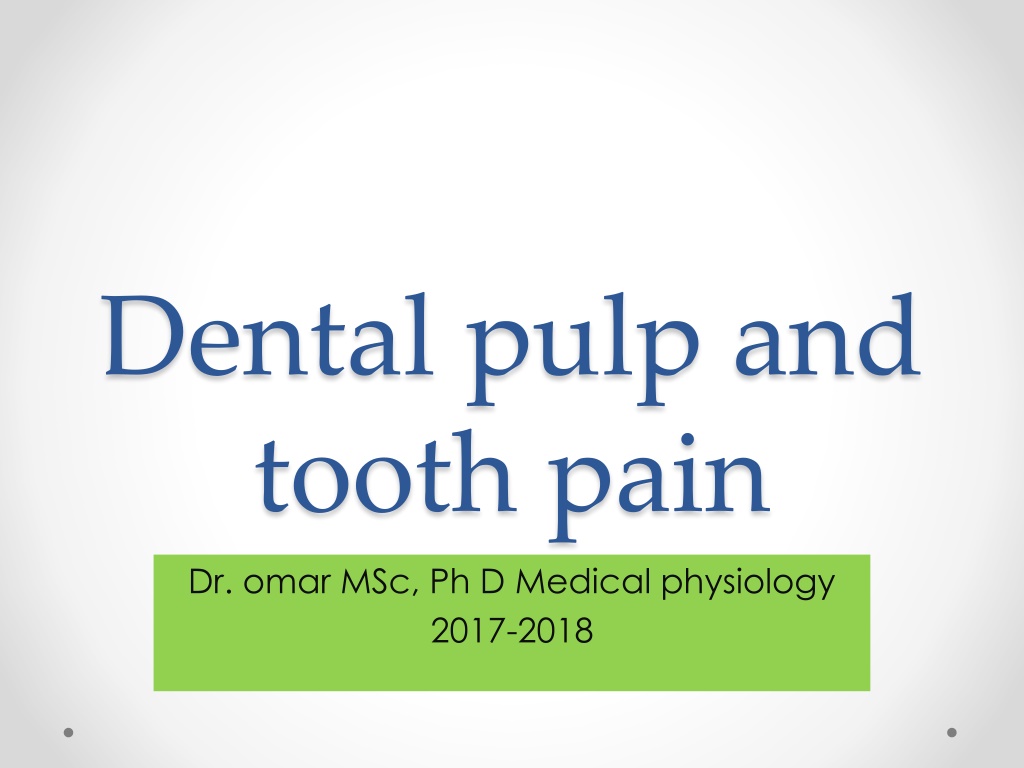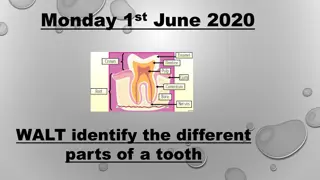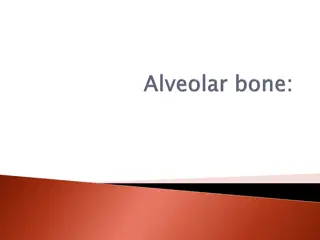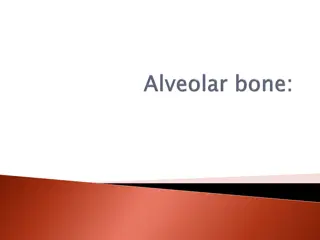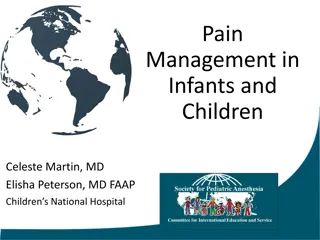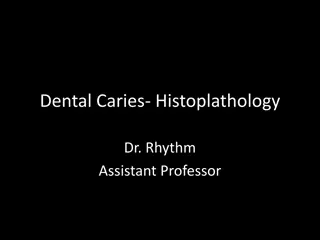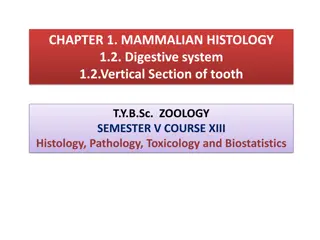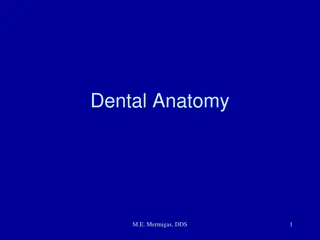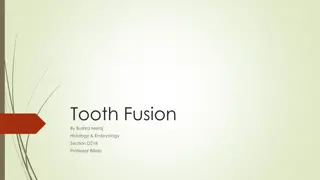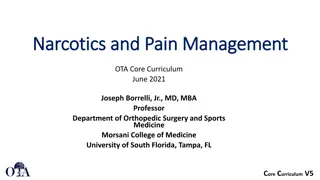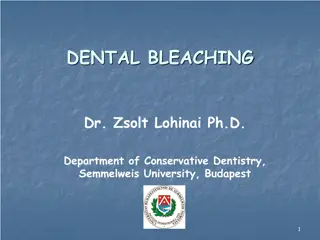Understanding Dental Pulp and Tooth Pain: A Comprehensive Overview
Dental pulp, a soft connective tissue, plays a crucial role in tooth health. It consists of various cells and components like collagen, proteins, and growth factors. The innervation of dental pulp by sensory fibers influences pain perception, with different types of nerve fibers implicated in different pain sensations. Inflammatory cells present in the pulp also play a role in immune responses. Ultrastructural studies have shown nerve fibers closely associated with odontoblast processes. This detailed insight provides a better understanding of dental pulp and mechanisms of tooth pain.
Download Presentation

Please find below an Image/Link to download the presentation.
The content on the website is provided AS IS for your information and personal use only. It may not be sold, licensed, or shared on other websites without obtaining consent from the author. Download presentation by click this link. If you encounter any issues during the download, it is possible that the publisher has removed the file from their server.
E N D
Presentation Transcript
Dental pulp and tooth pain Dr. omar MSc, Ph D Medical physiology 2017-2018
What is the pulp the dental pulp is a soft connective tissue that normally is not mineralized. The pulpal cells are from different origins. two structurally different vascular networks supply the pulp
Pulp layers Cell free zone outer layer Cell rich zone beneath it Central pulp
Pulp tissue component and cells Similar to connective tissue in other locations, the extracellular matrix of the dental pulp consists of collagens, non- collagenous proteins, glycoproteins, proteoglycans, enzymes, growth factors, various phospholipids and proteolipids, and components derivedfrom plasma
pulpobalst fibroblast-like pulp cells synthesize and secretecollagenous and non-collagenous proteins
Inflammatory cells It has inflammtory cells like neutrophils lymphocyte b \ t Dendritic cells, resident macrophages and histiocytes, mast cells, and polymorphonuclear leukocytes.
Innervation The dental pulp is innervated by afferent sensory fibers that are branches of the fifth cranial (trigeminal) nerve, and sympathetic and parasympathetic fibers that travel with the trigeminal nerve.
Ultrastructural studies have revealed the presence of nerve fibers and their endings closely associated with odontoblast processes within the lumina of dentinal tubules.
Sensory nerve fibers responsible for the sensitivity of dentin are implicated in events associated with early aspects of pain and sharp pain (A- , A- fast nerves). A- slow, intradental C fiber polymodal and silent, and C fiber nerves are concerned with ache.
Mechanisms of tooth pain the mechanisms of tooth sensitivity and pain are not fully elucidated. The remaining open question, therefore, is why and how dentin sensitivity appears in the outerdentin, especially at the dentinoenamel junction (DEJ), a noninnervated region of the crown. The same question arises concerning the cervical zone. Again, although they are very sensitive regions, no innervation has been found in these areas.
Direct mechansim Odontoblast cells has characteristics of sympathetic and parsympathetic neurons Odontoblasts play a role in tooth pain transmission as mediators of mechanotransduction, identified on the basis of mechanosensitive ion channels
Nerve fibers for pain transmission A-fibers are responsible for the sensitivity of dentin and for the mediation of sharp pain induced by dentinal stimulation. 2. Pre-pain (non-painful sensations) results with the activation of the lowest threshold A-fibers, some of which areclassified as A -fibers. A - and A -fibers belong to the same functional group. 3. Intradental C fibers are activated only when the external stimuli reach the pulp itself. They induce a dull pain by intense thermal stimulation associated with pulpal inflammation.
Neuromediators released by nerve ending Activation of transient receptor potential (TRP) channels is involved in tooth pain. The melastatin (TRPM8) receptor is found on A fibers in dentin and on C fibers in the pulp
First, A fibers mediate a sharp shooting pain, followed by C fibers mediating a dull persistent pain. Myelinated A fibers transmit information faster (5 30 m/sec, or 70 mph) than unmyelinated C fibers (<2 m/sec,or < 4.5mph A pass through odontoblast layer and end in dentin layer vs c fibers those end in the pulp
All these explain why there is initial shooting pain followed by dull pain after cooling of the tooth
Indirect mechnism dentin surface exposure leads to the displacement of the dentinal fluid. The movement of the dentinal fluid stimulates an odontoblast- nerve mechanosensory complex, resulting in pain sensation.
The numerous presence of p subctance has been found in painful pulpitis
Photomicrographs showing double fluorescent labelling for nerves (red) and substance P (yellow) in the nerve trunk of a carious asymptomatic pulp (left) and a carious painful pulp (right)
Photomicrographs of human tooth pulp showing green fluorescent labelling for nerves in the pulp of an intact tooth (left) and a carious tooth (right)
P primarily acts on NK1(tachynin) receptors and simulation of the NK1 receptor induces several second messengers systems like phospholipase
